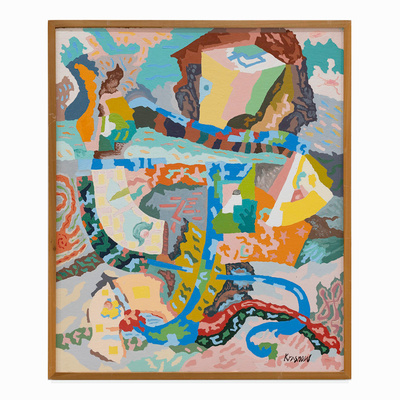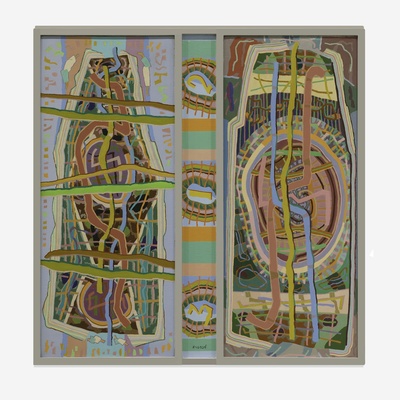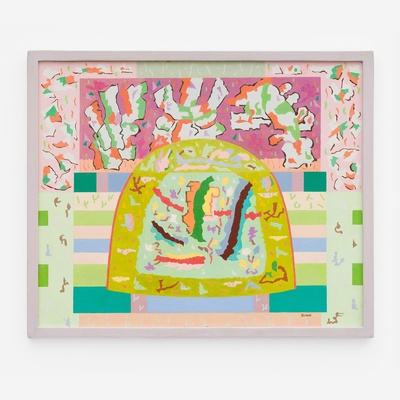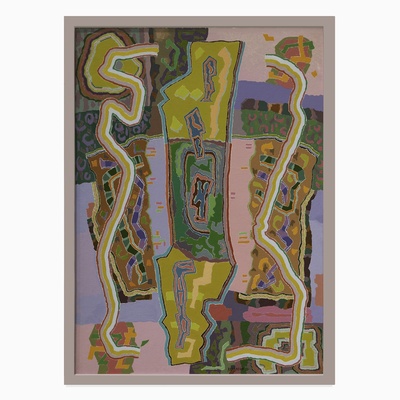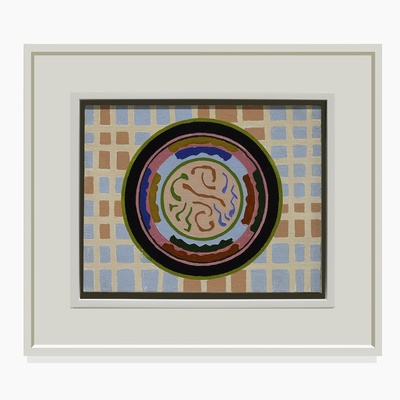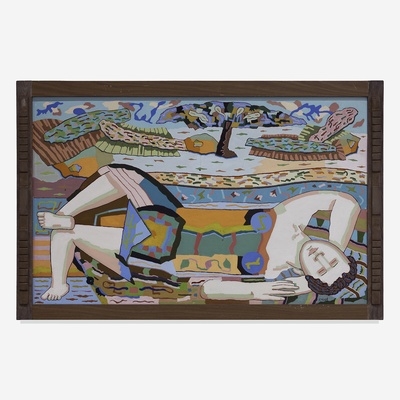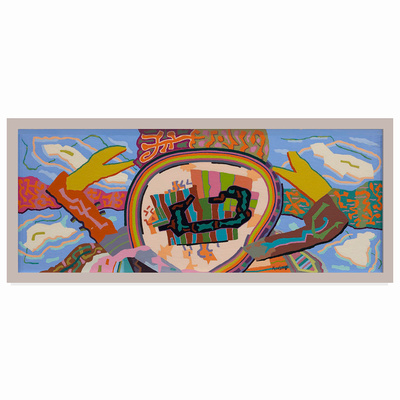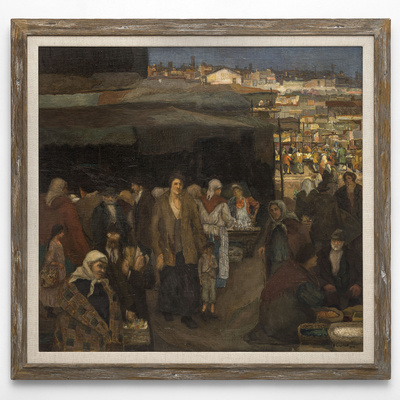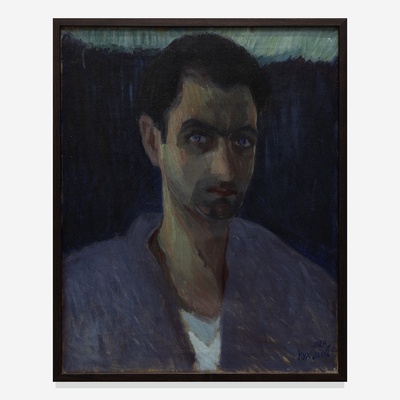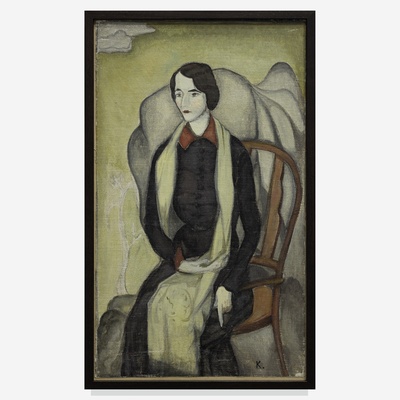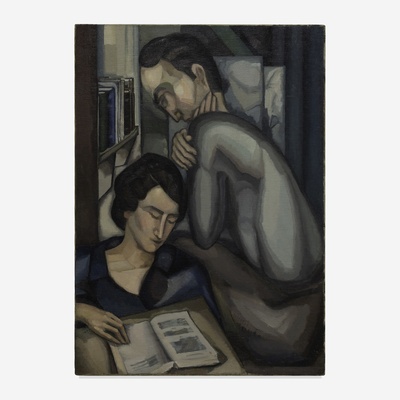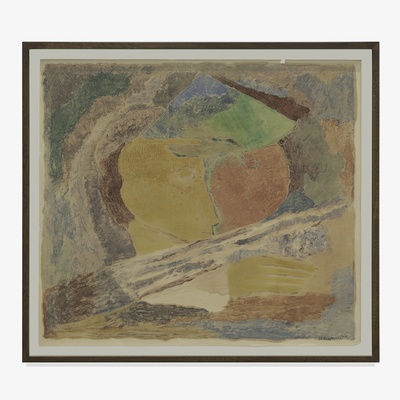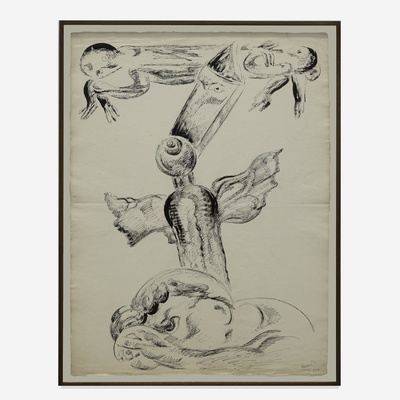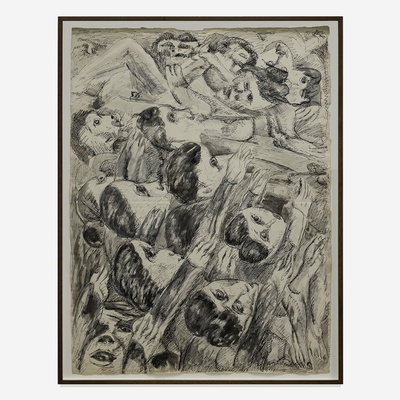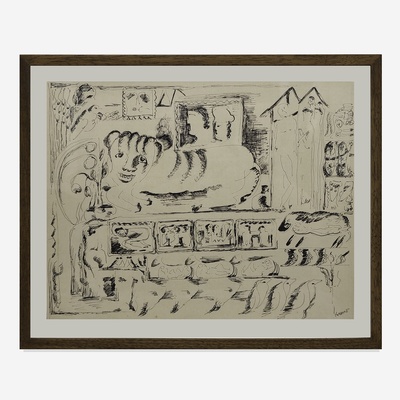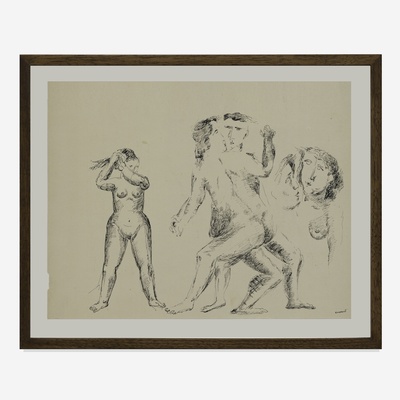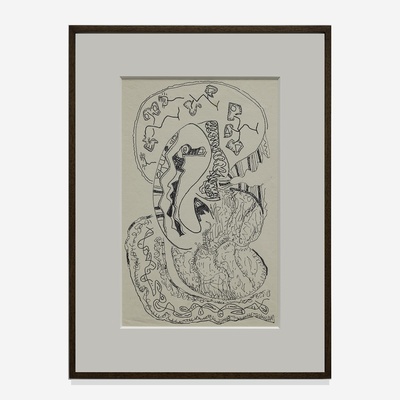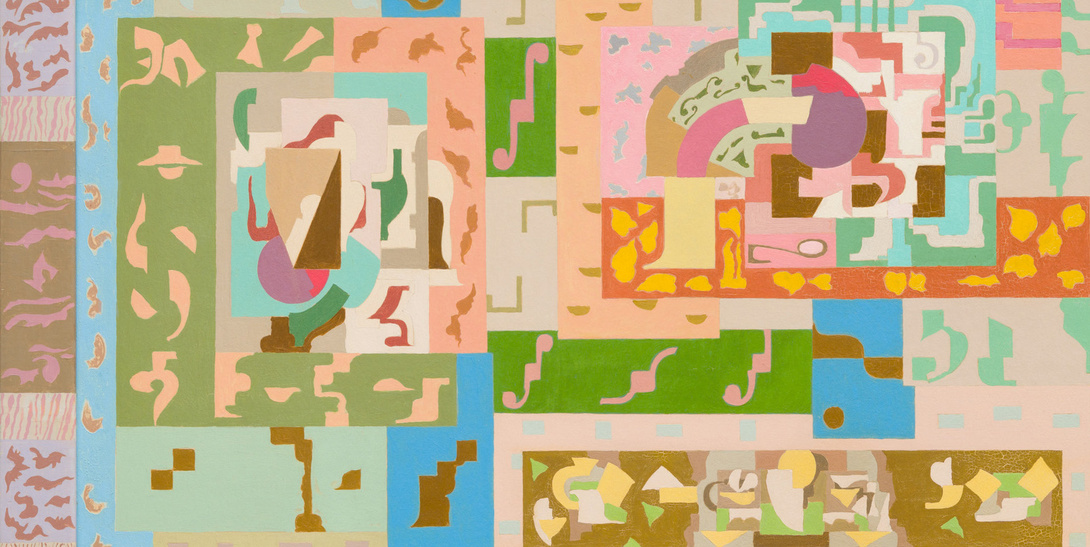
Peter Krasnow
“For those who have been on the scene and understand art as a constant, there is no question of the extreme importance of Peter Krasnow. I call him both the youngest old artist in Los Angeles and oldest young artist. Because his art doesn’t date. It’s ever present.” — Lorser Feitelstein
Babst Gallery is pleased to announce Peter Krasnow, an exhibition of works by Peter Krasnow (1886-1979). The exhibition features over 25 works made between 1916 and 1979, including early portraits, never-before-seen ink drawings, monotypes, and a series of colorful abstract paintings inspired by Hebrew calligraphy and the Southern California landscape.
Peter Krasnow (born Feivish Reisberg) was born in 1886 in Zviahel, Ukraine. He emigrated the United States in 1907 at age 20 to escape the pogroms. After graduating from the Art Institute of Chicago in 1915, Krasnow met writer Rose Bloom (1885-1984). They married in 1920, and lived in New York briefly, before driving cross-country to Los Angeles in 1922. They visited photographer Edward Weston, Krasnow’s friend and artistic peer, who invited them to pitch a tent on his property in Atwater Village. They eventually bought land next to Weston, where they built their home and studio and entertained some of Los Angeles’ most esteemed artists and intellectuals.
Krasnow achieved critical and commercial success with solo exhibitions at the Whitney Studio Club (1922), the Los Angeles Museum of History, Science and Art (1922 & 1928). In 1931 he was the subject of a solo exhibition at the California Palace of the Legion of Honor, which to him was “the most successful exhibition in the world…but it made me sadder than ever. They considered me a genius, praised me so high, and bought so much of my work. Yet the more they did for me, the more despondent I was...I wanted to be the big man they said I was.”
Later that year, Krasnow left the commercial art world behind, moving to the Dordogne region of France, where he worked on a series of monotypes and gouaches. He notes in his writings, “My first task was to liberate my mind from…'What will they say…Will they like it…will they buy…will they praise…will they reject’… an anomaly which plagues the artist at his easel, at his exhibits, follows him in his waking and sleeping hours and not infrequently annihilates his incentive for originality and daring.”
On the cusp of World War II, Krasnow returned to Los Angeles in 1934, and began a series of ink drawings portraying a chaotic, war-torn world. After Pearl Harbor in 1941, Krasnow changed course, embarking on a series of abstract painting that “breathed joy and light—color structures instead of battles scenes, symmetry to repair broken worlds. A means of protest to ease the pain. When despair reached its highest-zero point—it can hurt no more, and life persists.”
In these works, Krasnow began “to eliminate outline, blending of color and perspective,” concentrating on flatness and color by applying the paint directly from the tube so that “color came pure and unadulterated and played upon the surface creating pools of light, giving solidity, depth and texture to Form, and functioning as color is meant to function in painting.”
In the 1950s, Krasnow’s paintings began to be less symmetrical. It was during this time that art historian Aimée Brown Price describes, “forms were no longer truly symmetrical or at rest, locked into place, but played off against one another. New, amoebic, or jagged forms appear, sometimes in registers or within rectilinear zones, sometimes loosely looped together with laces of bright color.”
After his retrospective at the Pasadena Art Museum in 1954, Krasnow remarked, “I was a free man. I had nothing to run away from.” In the 1960s and 1970s, his brightly-colored paintings increasingly included Old Testament stories and Hebraic characters. Krasnow continued to sell directly to a small group of friends and exhibited primarily at non-profit institutions, such as at Scripps College (1964), San Francisco Museum of Modern Art (1976), and the Skirball Museum (1977-1979). Most recently, Krasnow was the subject of the exhibitions Peter Krasnow: Maverick Modernist, Laguna Art Museum, Laguna Beach (2016) and Peter Krasnow: Breathing Joy and Light, Skirball Cultural Center, Los Angeles (2023).
Peter Krasnow, Untitled, 1959 circa. Oil on board. 13 1/4 x 9 1/2 inches; 14 3/8 x 10 3/4 inches, framed.
Peter Krasnow, K-10 1962, 1962. Oil on masonite. 19 1/2 x 27 1/2 inches; 21 1/4 x 29 3/4 inches, framed.
Peter Krasnow, Untitled, March 10, 1972, 1972. Oil on board. 9 1/2 x 12 inches; 15 3/4 x 18 1/8 inches, framed.
Peter Krasnow, Untitled, December 6, 1972, 1972. Oil on board. 12 x 12 inches; 17 7/8 x 17 7/8 inches, framed.
Peter Krasnow, K-5 Avishag, 1972. Oil on board in artist's frame. 34 1/8 x 52 1/8 inches x 1 1/8 inches.
Peter Krasnow, 4 in 1, 1956-1963. 4 paintings on oil on board in artist's frame. 52 x 13 1/2 inches, overall; K-4 (Three Ovals), 1963, 5 3/8 x 8 3/4 inches; Bulls-Eye, 1962, 11 3/8 x 8 5/8 inches; Square, 1956, 11 1/2 x 8 5/8 inches; Large, 1957, 17 1/2 x 11 1/2 inches.
Peter Krasnow, Selt Portrait, 1920. Oil on canvas. 20 3/4 x 16 3/4 inches; 21 3/4 x 17 3/4 inches, framed.
Peter Krasnow, Still Life Fruit Bowl, 1920s. Oil on masonite. 20 3/4 x 28 1/2 inches; 21 3/4 x 29 1/2 inches, framed.
Peter Krasnow, Study for a Portrait of Miss Lillian Poulter, 1925. Oil on canvas laid down on board. 20 5/8 x 12 1/8 inches; 21 5/8 x 13 1/8 inches, framed.
Peter Krasnow, Stallion, 1928. Lithograph on Japanese laid paper. 18 x 13 3/8 inches; 25 1/8 x 20 1/4 inches, framed.
Peter Krasnow, Untitled, 1931-34, circa. Monotype on paper. 16 x 18 inches; 17 3/4 x 19 3/4 inches, framed.
Peter Krasnow, Untitled, 1931-34, circa. Watercolor on paper. 18 x 12 inches; 13 1/2 x 13 1/2 inches, framed.
Peter Krasnow, August 8, 1937, 1937. Ink and watercolor paper. 31 x 23 inches; 33 1/4 x 25 1/4 inches, framed.
Peter Krasnow, Untitled, 1942 circa. Ink on paper. 8 1/4 x 10 3/4 inches; 10 2/8 x 12 3/8 inches, framed.

